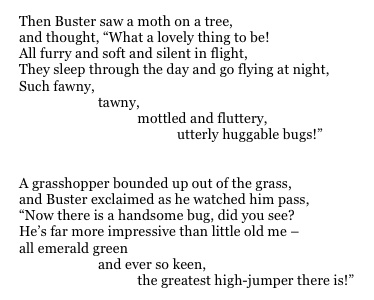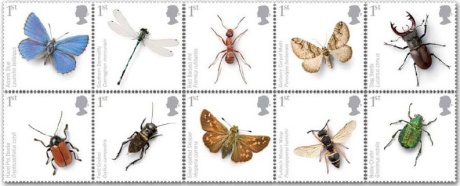Twitter is a wonderful way to make new friends. Recently a head teacher I follow drew my attention to a knitted puffin that a Glasgow teacher had put up on Twitter. She thought it looked very like one of the characters of my puffin books, Lewis Clowns Around and Harris the Hero.
I was impressed, and wondered if Susan the clever knitter would be able to create a fluffy grey puffling to go with me on school and nursery visits when I’m reading my new puffin story, Skye the Puffling. Through Twitter I was able to chat to Susan about what Skye should look like, and show her the lovely illustration by Jon Mitchell:
 Susan immediately set to work, and soon I was able to see my little puffling taking shape! Not being a knitter myself, I was baffled by the complex knitting instructions she seemed to be following. A fluffy little grey thing began to emerge…
Susan immediately set to work, and soon I was able to see my little puffling taking shape! Not being a knitter myself, I was baffled by the complex knitting instructions she seemed to be following. A fluffy little grey thing began to emerge…
 Next she sent me a little bird shape and I could imagine a very cute, fluffy puffling who looked soft and snuggly:
Next she sent me a little bird shape and I could imagine a very cute, fluffy puffling who looked soft and snuggly:
 Finally, Susan sent me a picture of Skye with eyes and a beak, with the message, “only the feet to add.” Little Skye was soon finished, and Susan and I agreed to meet up so I could repay her with three copies of my puffin books.
Finally, Susan sent me a picture of Skye with eyes and a beak, with the message, “only the feet to add.” Little Skye was soon finished, and Susan and I agreed to meet up so I could repay her with three copies of my puffin books.
 My fluffy Skye has already come with me to a Bookbug Library Challenge event at Drymen Library, and she was very well received! I’ve got another event tomorrow at Alloa Library, and Skye will be coming with me again, to be sure.
My fluffy Skye has already come with me to a Bookbug Library Challenge event at Drymen Library, and she was very well received! I’ve got another event tomorrow at Alloa Library, and Skye will be coming with me again, to be sure.
 I was very touched by Susan’s generosity, and it was a real pleasure to meet her for a chat as we exchanged puffins. Many thanks to Joyce Hawkins who first alerted me to Susan’s impressive knitting talents!
I was very touched by Susan’s generosity, and it was a real pleasure to meet her for a chat as we exchanged puffins. Many thanks to Joyce Hawkins who first alerted me to Susan’s impressive knitting talents!
While I was on holiday in Spain another knitted item caught my eye. It was a pair of soft and squishy cactus plants with brilliant care instructions: “Cactus of extremely slow, almost imperceptible growth. Easy to care for, simply give abundant morning smiles.” As my daughter is a huge cactus fan, I took a photo of them to show her. I’m glad I did, as it meant I could show the same photo to Susan. I thought she could easily knit a cactus and find a pot for it, and sure enough, she had already done it!
It seems there is no end to what you can do with knitting needles! Susan is already thinking about Christmas…





































